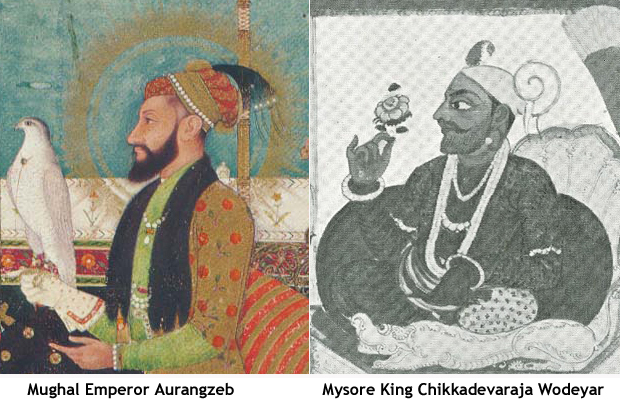The forgotten reservations - How Brahmins survived 18th century wars in Mysore Kingdom
The residential areas of 18th century Mysore Kingdom seem to have followed the age old varna or caste system of Hinduism according to eye witness accounts. Francis Buchanan^, an early 19th century English Physician, traveler and writer says Brahmins always occupied the most fortified part of the villages, towns and forts that he visited. Hence, according to him non-Brahmins were the worst sufferers of invasions by external forces. Here are a few such accounts by him:
'It must be observed, that throughout both Carnatica, except at Madras, and some other large towns under the government of infidels, the Brahmans appropriate to themselves a particular quarter of every town, and that generally the best fortified. A Sudra is not permitted to dwell in the same street with a Brahman; while he again exacts the same difference from the Whalliaru or Parriars, and other low caste. These people in general live in wretched huts about the suburbs. A Brahman is considered as polluted by merely
walking through such a place.' 1
'Tavina-Caray* is a small town; but several additions to it are making. Some streets in the Petta are well laid out; and , as an ornament before each shop, a coco-nut palm has been planted. The fortress, or citadel, is as usual almost entirely occupied by Brahmans. This might seem to be an improper place for men dedicated to study and religion; but in cases of invasion their whole property is here secure from marauders; while the sudras, who are admitted during the attack as defenders, must lose all their effects, except such movables as in the hurry they can remove.' 2
*Refers to modern day Tovinakere town in Tumakuru District.
'...the custom of the town* was for all parties to live together, the Brahmans excepted, who occupied the fort'
*Gubbi town, Tumakuru District
'The fort* contains the temple, and a hundred houses occupied by Brahmans; the suburbs contain three hundred houses of the low casts'
*at Harihar
Buchanan's views are reinforced by an actual eyewitness from the British East India Company who fought against Tipu's forces in the Third Anglo Mysore War. During the war the Dharwar Fort, in north Karnataka was besieged by the combined armies of Marathas led by Parasuram Bhow and East India Company's Bombay Army from November 1790 till 7 April 1791, when its commander Nawab Badruzzaman surrendered. When the British entered the fort they came across Brahmins and their temple inside the fort according to Edward Moor in 'A narrative of the operations of Captain Little's detachment, and of the Mahratta army, commanded by Purseram Bhow; during the late confederacy in India, against the Nawab Tippoo Sultan Bahadur' (London, J.Johnson, 1794). Moor has left behind an extensive eye-witness account of the 3rd Anglo Mysore, along with Major Dirom.
Dirom has written an extensive account of the final phase of the war starting with the joining of Maratha Armies with that of Lord Cornwallis' in May 1791 till its end with Tipu's capitulation in Mar. 1792, in his book 'A narrative of the campaign in India, which terminated the war with Tippoo Sultan in 1792', published in 1793. According to Dirom after the capture of Nandi Durga (Nandi Hill) in October 1791, while the fighting men and Mysore Army officers were sent as prisoners to Vellore, the Brahmins along with the women were offered a safe passage to another fort nearby.
The push for Brahmins to thrive at the cost of Shudras seems to have enjoyed political support of the men who controlled Mysore Kingdom. According to Buchanan, under Nandi Raya the Mysore Dalwai, the temple town of Nanjangud was cleared of its 700 houses of Sudras. They were dispersed into he surrounding villages and only the Brahmans who had 300 houses were permitted to reside inside the newly fortified town.
^Note:
Francis Buchanan ('A journey from Madras through the countries of Mysore, Canara, and Malabar', in 3 volumes, 1807) claims to have travelled from Madras across the regions of Malabar (current Kerala state), Old Mysore and Coastal Karnataka and the Baramahal (Tamil Nadu) between 23 April 1800 and 6 July 1801. He has written of the social, economic and political life that he claims to have seen and heard along way. It must be added here that Buchanan was appointed by Marquis Wellesley, Governor General of India for this job and his journal was published on orders of the Directors of the East India Company in 1807. Incidentally his stories have shaped the modern political discourse of Karnataka every since. He has particularly been selectively quoted by right-wing Hindutva writers who use his accounts to build their narrative, particularly on Haidar Ali and his son Tipu Sultan, the late 18th century rulers of Mysore Kingdom (modern day Karnataka).
References quoted from Francis Buchanan's above book:
1. Vol. 1, Page 38, Chapter 1
2. Vol. 2, Page 310, Chapter VII
3. Vol. 2, Page 314. Chapter VII
4. Vol.3, Page 314, Chapter XVIII
~ ~ ~
ಈ ಬ್ಲಾಗನ್ನು ಕನ್ನಡಲ್ಲಿ ಓದುವುದಕ್ಕಾಗಿ ಇಲ್ಲಿ ಕ್ಲಿಕ್ ಮಾಡಿ
इस ब्लॉग को हिंदी में पड़ने के लिए यहाँ क्लिक करें
~ ~ ~
इस ब्लॉग को हिंदी में पड़ने के लिए यहाँ क्लिक करें
~ ~ ~







A well written article. An eye opener account, and a true story whuch the modern so called writers try to hide
ReplyDeleteGreat heart touching blog ...Thank you for sharing the informative blog . To know more about Apartments for sale in Mysore.
ReplyDelete